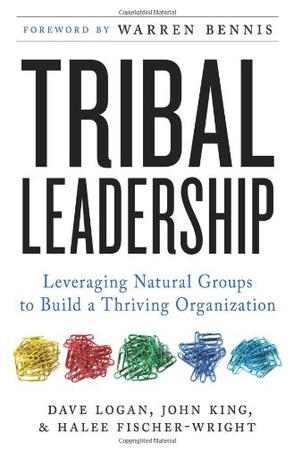-

断舍离:心灵减负篇
依赖他人?执着过去?逃避现实?担忧未来? 如若不给心留出更多空间,我们怎能接纳未来?山下英子《断舍离》最新篇,独创心灵加减法。让你为心灵减负,活出全新自我。 2013年,一种新型的整理观念——断舍离正在悄悄改变全亚洲人的生活;今天,断舍离创始人山下英子告诉你,断舍离不仅仅是一种整理术,更是一个心智历练的过程,是一种做减法的修行。 本书列举了大量案例,突出介绍了四种急需断舍离疗法的群体:逃避现实型的拖延症群体,执着过去型的依赖症群体以及担忧未来型的抑郁症群体。山下英子携手著名心理医师中村究,开设心灵断舍离讲座,引导人们转换思考模式,把焦点放在成功完成的事情上,改用加分法生活,一点一点地累积判断力、自信心,不断进行自我肯定,并从中获得积极向上的力量。 在这本书里,山下英子让我们学会了用断舍离给我们的心灵减负,更提出了针对依赖与抑郁症的心灵加减法,让我们在断舍离的实践中认清自我,寻找更深层的自我认知和理解,会发现生活原来可以这么简单自在呢。最终达到: 不为他人的想法左右,认清自己内心的想法,过自己想要的生活。 -

ADD的人生整理术
一位是享誉业界的专业整理大师 一位是久负盛名的ADD临床医学专家 联手为你打造真正有效的人生整理方略 《ADD的人生整理术》致力于解决ADD人士所面临的各项具体挑战。朱迪丝•科尔伯格是一位专业整理师,擅长帮助ADD人士及深受其他慢性失调症困扰的人们,与她合作的凯瑟琳•纳多是一位心理医生,也是ADD研究专家,两人联手打造了这部极富创新性的作品。通过大量激发读者同情心的小故事,令ADD人士轻易获得共鸣,而她们所提供的ADD友好型整理解决方案,不仅会带来能够长期维持的条理性方面的巨大成功,甚至能够改变你的一生。 -

不可思议的情商
本书为美国最权威的EQ测评与训练机构Talents mart的情商训练指南。 本书作者特拉维斯•布拉德伯利博士和吉恩•格里夫斯博士多年来活跃在情商领域,他们二人力求加强人们对情商的理解,将合力完成的最新研究倾注于书中,以简明实用的模式和直白明了的信息向读者展示了作为智商的孪生姐妹的情商是怎样帮助我们缓解压力、提高工作效率、掌控不良情绪、增进婚姻幸福感、应对复杂人际关系的。 本书附赠的情商测试可以帮助你发现你的情商水平,并确定你应该努力的方向。请获取书内密码,登陆权威EQ测评网站:http://www.talentsmart.com/eiqb/chinese-simplified 书中的情商训练技巧和效果已得到了超过50万人的验证,其中的每个故事都是真实的。 -

戴尔·卡耐基全集
《戴尔·卡耐基全集》内容简介:戴尔·卡耐基是美国著名的成人教育家、心理学家和人际关系学家,被称为“20世纪最伟大的心灵导师”。他运用心理学的知识,对人类共同心理特点进行探索和分析,开创了一套集演讲、为人处事、消除忧虑和烦恼、获得成功与幸福为一体的人生哲学和教育模式。 -

当时挺住就好了
"《当时挺住就好了》是心理学博士,美国康涅狄格大学教授墨菲创作的自我行为和情绪管理教程图书。 同一个世界里,我们会发现人们扮演着截然不同的两种角色——成功者和失败者,即便所有人的出发点都是一样的,但有些人还是会划出不一样的人生轨迹,取得令人羡慕的成功,而大多数人则要忍受一生平庸。 是什么让人们拥有截然不同的命运呢?那些失败者和成功者的差距到底在哪里?旅美华人墨菲先生是一名心理学博士,同时也是康涅狄格大学教授,他历经长达十几年的时间,对五百多位成功者进行追踪调研,同时也对大量失败者进行观察和分析,最后发现,其实那些失败者与成功者之间往往只有一线之差,很多失败者“差一点”就成功了,而很多成功者也“差一点”就失败了。 通往成功的道路并非一路坦途,机遇之中同样蕴含着巨大的挑战,能够抓住机遇,战胜挑战,便可以成为成功者,反之便是失败者。在面临机遇和挑战的关键时刻,能否挺得住、跨过去,便是成功者和失败者之间的分水岭。 墨菲先生将十几年来的研究成果整理成了《当时挺住就好了》一书,通过大量的案例佐证和科学的剖析,通过本书指导,彻底改变你的思维逻辑、重塑你的行为准则,最终抓住机遇,实现成功。" -

Tribal Leadership
The authors, management consultants and partners of JeffersonLarsonSmith, offer a fascinating look at corporate tribes—groups of 20–150 people within a company that come together on their own rather than through management decisions—and how executives can use tribes to maximize productivity and profit. Drawing upon research from a 10-year study of more than 24,000 people in two dozen organizations, they argue that tribes have the greatest influence in determining how much and what quality work gets done. The authors identify the five stages of employee tribal development—Life sucks, My life sucks, I'm great and you're not, We're great and Life is great—and offer advice on how to manage these groups. They also share insights from the health care, philanthropic, engineering, biotechnology and other industries and include key points lists for each chapter. Particularly useful is the Tribal Leader's Cheat Sheet, which helps determine and assess success indicators. Well written and enlightening, this book will be of interest to business professionals at all levels. (Feb.) Copyright © Reed Business Information, a division of Reed Elsevier Inc. All rights reserved. "[T]he most thorough and unique book to come along pertaining to organizational dynamics in quite some time....Whether you’re trying to move an organization forward or trying to move forward yourself, Tribal Leadership is a great place to begin your efforts. "[A]n unusually nuanced view of high-performance cultures. . . . [S]hare the book with your Type A’s and prima donnas, as it expertly describes the tension between loners who perform exceptionally and those who perform exceptionally but who measure success as part of a team." "Leaders of both for profit and non-profit organizations, including politicians, and can benefit from perusing Tribal Leadership."